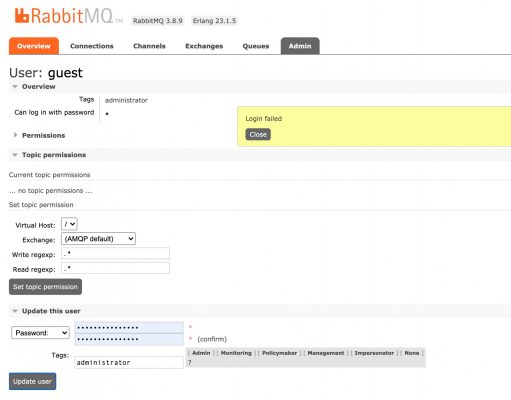Are the 14 points of management from Edwards Deming's 1982 book Out of the Crisis still relevant?
I think they are. They reflect the key components of the successful management system that Deming advocated. If leaders study these points carefully and begin to use them, they will only benefit from it.
Deming developed 14 ideas or principles of management that can significantly improve the effectiveness of any organization. These principles were first presented to the general public in his book Out of the Crisis (1982).

Deming's approach to managing people, processes, and resources is, in general, sound business thinking and a sustainable approach to running a business and building a management system that produces good results. Although Deming was primarily concerned with improving quality, efficiency, and cost, applying these principles will also help create value by eliminating waste and making optimal use of limited resources—people and materials. The principles are often interrelated and interdependent.
Don't think that these 14 points are unrelated to each other. They make sense on their own, but the real power of these ideas is that they work together to create a management system that is superior to all others.Source)
Deming's 14 points
1. Create a continuous goal to improve products and services to remain competitive and secure jobs
Continuous improvement should not be done as often as possible, but rather it should be a constant process of improvement – trying to do better than your competitors. Do better than you did yesterday. The fourth pillar SAFe — continuous improvement — refers to the persistent sense of danger that keeps organizations competitive in their aggressive pursuit of opportunities for improvement.
The danger of disruption to the status quo is real. In the age of artificial intelligence and quantum technology, world-changing innovation is the norm rather than the exception. Google search is widely seen as the default. But even this robust business model is under threat from technologies like ChatGPT.
2️. Adopt a new philosophy
We are entering a new economic era. Western management needs to accept the new challenge, learn its responsibilities and take charge of change.
In the 1980s, organizations focused on quality and service. Now, uncompromising quality and lightning-fast service have become the base. As organizations operate in a harsh and unpredictable global economic climate, user experience and user engagement are critical. Therefore, it is imperative that agility become the DNA of your business and organizational resilience a way of life. This will only happen when leaders become advanced transformational leaders. Elon Musk is a textbook example of a transformational leader.
ps – and yes, perhaps not only Western management, but all management
3. Eliminate reliance on testing to achieve quality. Eliminate the need for mass testing by building quality into the product from the start.
Thanks to advances in technology and infrastructure, we can create automation — CI/CD — that achieves the goal of “building quality in.” But more than the technology itself, it’s a mindset — a mindset that underlies agile approaches. With iterative, incremental development and close collaboration with product owners and the business, problems are discovered and resolved much earlier in the lifecycle.
Stopping the reliance on testing to achieve quality is important for all products. You may recall the failure Samsung had with its Note 7 phones. They recovered, but it was a big failure.
4️ Stop the practice of contracting solely on the basis of cost
Instead, aim to minimize total costs. Move toward working with a single supplier for each product or service category based on long-term relationships built on loyalty and trust.
Teams are the fundamental building block for creating amazing products—products that customers love and teams are proud of. Team structure and tenure have a significant impact on productivity and cycle time. Long-lived teams are especially important because it takes time to build loyalty and trust. Every team goes through a process of Tuckman cycle at your own pace.
IN Agile Manifesto It is rightly said: “Build projects around motivated individuals. Provide them with the necessary conditions and support, and trust them to get the job done.”
Your “total cost” advantage will come from high-performing teams, not individual cost optimization. (See “Instead of hiring 'high performing engineers', build 'high performing teams'”)
5. Continuously and continuously improve the production and service system to improve quality and productivity, and thus continuously reduce costs
“If you can only implement one agile practice, make it retrospectives. Everything else will follow,” said Woody Zuill at the Agile2015 conference. And indeed, it is.
Retrospectives should be strict.
But it takes a lot of work. Retrospectives are often half-baked, especially in larger companies. Teams throw out a bunch of bullet points to show that “we” are a learning organization. But are they learning and improving? The biggest barriers to honest and candid retrospectives are organizational culture and politics.
We need to remove fear from the system. We need to create a culture where people are not afraid to say that the emperor has no clothes. Otherwise, we will never get to the real problems—the ones that really matter and whose solutions will help improve the system. An organizational culture that is biased toward optimism, either genuinely or because of internal politics that cause people to distort the strategic picture, obscures the real picture. Sometimes it is good to be self-critical. While organizations should hope for the best, we should plan for the worst—and always continue to improve.
6️. Build a system of training without interruption from the performance of work tasks
When organizations invest resources in training their employees, it enables them to bring maximum value to the organization. While standard training may sometimes be necessary to speed up learning, especially in new areas, it is important to create opportunities for peer learning.
Strong communities of practice can support your business model. Enthusiasts help new members integrate into the team faster, which leads to lower onboarding and training costs. Colleagues support each other in solving new problems, and the community becomes more intelligent and tightly integrated. A developed community can become your competitive advantage.
7️. Develop leadership
The purpose of control should be to help people, machines, and devices do their jobs better. Management control needs to be reconsidered, as does control of workers.
We live in the era of the knowledge worker. The term “knowledge worker” was coined by Peter Drucker in his book Landmarks for the Future (1959). Drucker defined knowledge workers as highly skilled workers who apply the theoretical and practical knowledge gained through formal training to develop products and services. (Source)
Knowledge workers often know more about a subject than their managers. The role of the manager here is not to hand out tasks, but to create conditions for the team to work successfully. This requires developed leadership skills related to systems thinking, which helps to see the big picture and work with teams to solve systemic problems.
SAFe rightly calls such leaders “Lean-Agile leaders who drive and sustain organizational change and operational excellence by enabling individuals and teams to achieve their highest potential” (see “Lean Agile Leadership”).
8. Eliminate fear so that everyone can work effectively for the benefit of the company
Psychological safety means the absence of interpersonal fear. “Psychological safety exists when people feel free to express their opinions, offer ideas, and ask questions.” (Amy Edmonson, “Working Without Fear: How to Create a Psychologically Safe Organization for Maximum Team Performance”).
Creating an environment of psychological safety requires leaders to be aware of what is happening around them and within them. This requires developing emotional intelligence and being “on the front lines.” (See “Gemba Walk: Where the Real Work Happens”).
Teams will be more open with you if you are brave and not afraid to show vulnerability during difficult times. Empathy and compassion will help create the right space for team members to speak up.
Researchers at Google's Project Aristotle have found that it's not so much who's on a team that matters, but how team members work together. They put psychological safety first (see “Google re:Work”).
9. Remove barriers between departments
Employees from research, design, sales, and development departments must work as a cohesive team to anticipate potential manufacturing and usage problems that may arise with a product or service.
This is classic DevOps. We all know it is sorely needed. Silos prevent collaboration. DevOps involves active collaboration between the development team and the IT department, which in turn ensures the continuous delivery of applications and services to end users.
Today, DevOps is not just about collaboration between development teams and IT. However, we are now seeing teams collaborating across all dimensions (see “Introduction to Trending Ops: SysOps, DataOps, DevSecOps, AIOps, ITOps”), and various DevOps team structures that facilitate collaboration (see “Why DevOps Team Structure Is Important”).
10. Eliminate slogans, calls and goals for employees that require zero errors and new levels of productivity
Such restrictions only create hostility because the root causes of poor quality and low productivity are systemic and therefore beyond the control of workers.
Deming was critical of various slogans in the workplace and argued that they do more harm than good because they only lead to employee frustration. The main reason for frustration is that systemic problems are often not addressed, which prevents employees from living up to the slogans. The situation is made worse by the fact that many managers are often perceived as people who do not live up to these slogans themselves.
While empty slogans are a problem best avoided, well-intentioned slogans that have visible leadership commitment have their power. An example of this is the photo of Mark Zuckerberg after his IPO holding a sign that reads “Stay focused and keep shipping” — and it’s a powerful slogan that works and inspires others.
11. (Part A) Eliminate production standards (quotas) in the workplace. Replace them with leadership.
11. (Part B) Abandon management by objectives. Abandon management by numbers, numerical targets. Replace it with leadership.
To deliver value, managers need to focus on and measure the business impact (value) of actions taken (outcomes), rather than the results of actual actions (outputs). Business impacts are what a business wants or needs to get from the product or service it brings to market, and outputs reflect the actions that contribute to achieving those business impacts.
The results of actual actions usually have quantitative indicators by which achievement can be judged; they are easy to report and verify. However, the results of actual actions are also easy to manipulate and may not always be determined correctly, intentionally or unintentionally.
Business effects (outcomes) can be both qualitative and quantitative. Instead of thinking only about the business effect and the results of actual actions, try using the approach OKRwhich has benefited many. Structured definition of business impact and key results together with teams helps management translate their intentions into actions at the team level. (see “Measure what really matters” – OKRs)
12. (Part A) Remove barriers that deprive hourly workers of the right to pride in the quality of their work.
The responsibility of managers must be changed from quantity to quality.
12. (Part B) Remove barriers that prevent people in management and engineering positions from taking pride in the quality of their work.
This means, in particular, the abolition of certification and “management by objectives” (see Management by Objectives, MBO) (see point 3).
Employee productivity remains a favorite management metric. However, it is a very imperfect measure. The classic “carrot and stick” approach to achieving it is often used, and research shows that it does not work. With this approach to motivation, the satisfaction of a job well done is often lost in the desire for praise and promotion.
Intrinsic motivation works better. People motivate themselves because they have the freedom to do work they enjoy and are passionate about. The three driving forces of autonomy, mastery, and purpose allow leaders to better leverage the power of their teams to excel and take pride in their work. (See “What Really Motivates Employees”)
A leader's ultimate goal should be to create an environment in which his team can perform at their best.
13. Develop an active program of learning and self-improvement
Learning and training are two different things. Employees can be trained in certain skills, but they learn to apply those skills to achieve business results in the workplace and through their own efforts. Creating a learning culture in the workplace encourages employees to go beyond formal training and acquire skills that make them better every day.
A learning culture is an environment that demonstrates and encourages individual and organizational learning. It is a culture in which acquiring and sharing knowledge is prioritized, valued, and rewarded. It becomes part of the organization's ecosystem. (Source)
LinkedIn research shows that half of the most in-demand skills today weren’t on the list three years ago. So creating a culture of learning is paramount (see “4 Ways to Create a Culture of Learning in Your Team”).
14. Involve everyone in the company in the transformation effort. Transformation is everyone’s job.
We are living in an era of digital transformation. Three major trends in digital transformation include change management, increasing migration to the cloud, and advanced technologies such as artificial intelligence and machine learning.
These changes affect everyone in the organization; not just the development team, but also the front office, sales, HR, and others. For an organization to remain truly competitive and sustainable, everyone must play their part, and transformation must be everyone’s business.
Completion
Deming's 14 points are as relevant in 2023 as they were in 1982. Leaders will benefit from taking a closer look at these points and using them in their work.
In conclusion, we invite everyone to an open lesson dedicated to QA team design, which will take place on July 11 at 19:00.
During the lesson, we will create a team portrait and form a team member profile. We will consider types of teams (self-organizing team, cross-functional team, functional team) and an emotional portrait of team members. We will talk about the main roles, team dynamics according to Bruce Tockman and the team star map.
You can register for free on the “QA Lead” course page.





